Flying carpets in Vienna
The Carpet Hall at the Austrian Museum for Applied Arts (MAK) in Vienna has just reopened to the public after an extensive and imaginative reinstallation that presents the museum’s permanent collection, including the world famous Habsburg Imperial holdings of classical carpets, in an entirely new light, perhaps shocking to some, but in which many of the most important pieces in the collection can be clearly seen.
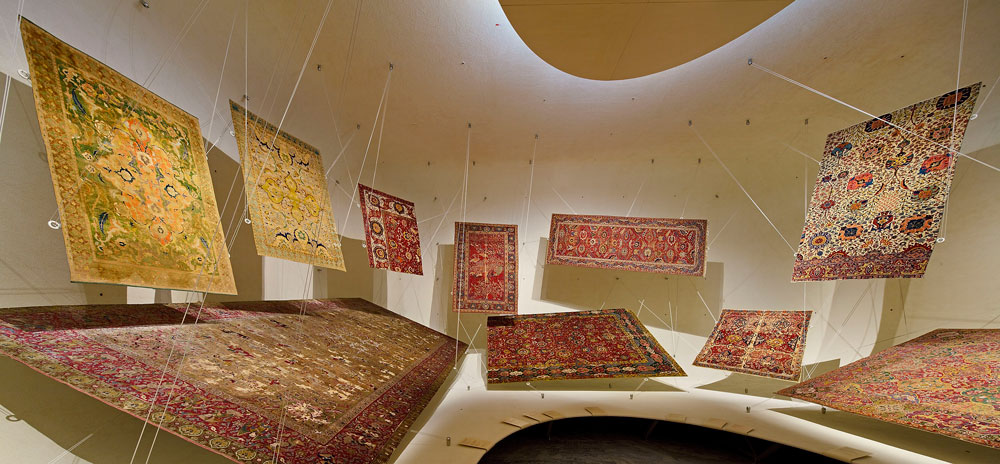
For the MAK’s 150th anniversary, designer Michael Embacher has given the Permanent Collection Carpets a new spatial concept that integrates an artistic intervention by the Turkish artist Füsun Onur. This new presentation features the carpets of the MAK Collection as components of an intercultural dialogue, as elements of exchange both within Asia and between Asia and Europe. Collection objects from the Ottoman and Safavid Empires are joined here by a selection of European pieces, and other objects from the arts-and-crafts sphere interrelate with the carpets from their respective regions of origin, serving to place them in a multilayered formal context and to underline their historical authenticity.
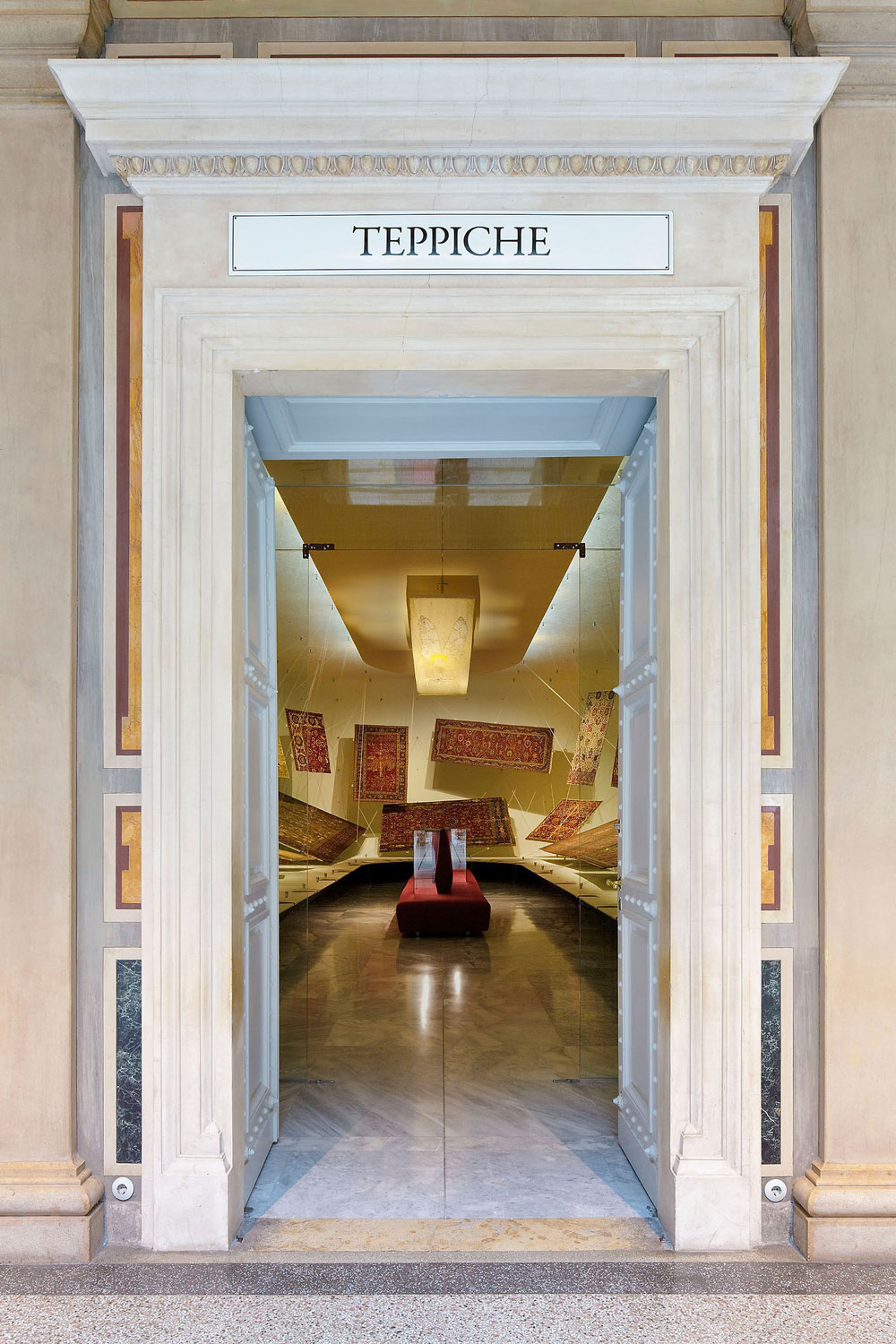
The MAK’s collection of carpets is among the three most important such museum collections worldwide. Its core is the classical carpets from the 16th and 17th centuries, the Golden Age of the great Islamic realms of the Ottomans, Safavids, and Mughals. In addition to pieces from the Islamic world, the MAK is also home to a group of high-quality 18th-century carpets from the Savonnerie manufactory in France.


The MAK’s collection came together less via systematic acquisitions and more due to the historically motivated integration of holdings, with each group originally having been compiled according to an independent set of criteria. The first carpet was purchased for the museum quite early on, in 1868, and most of the items that comprise the present-day collection were already united beneath one roof by 1922. The most important examples were former imperial property.
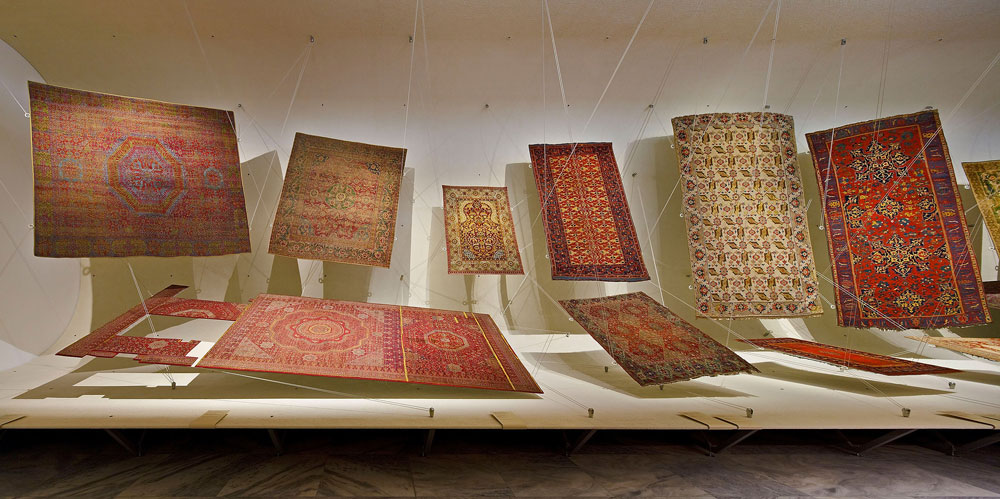



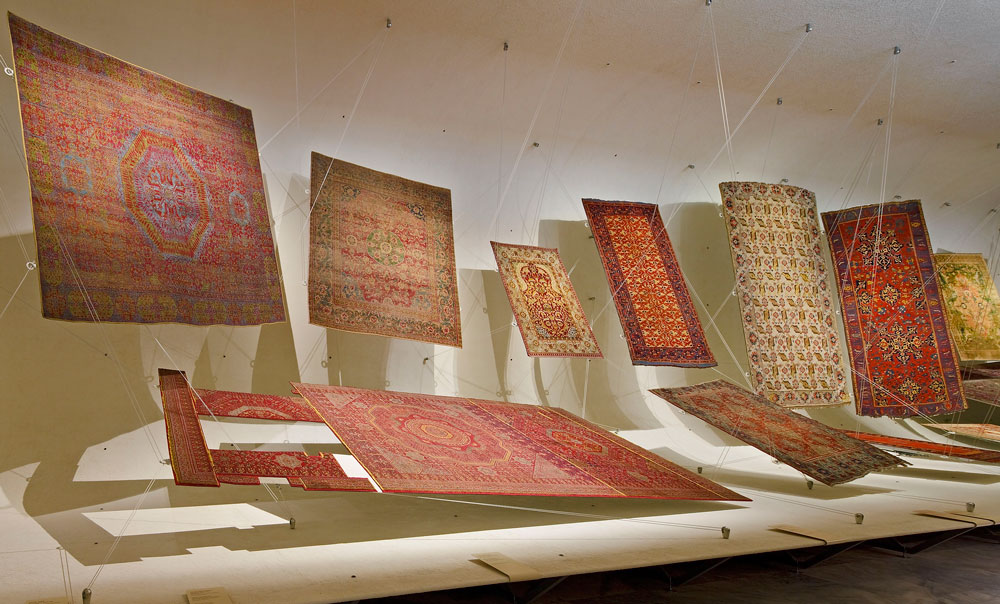
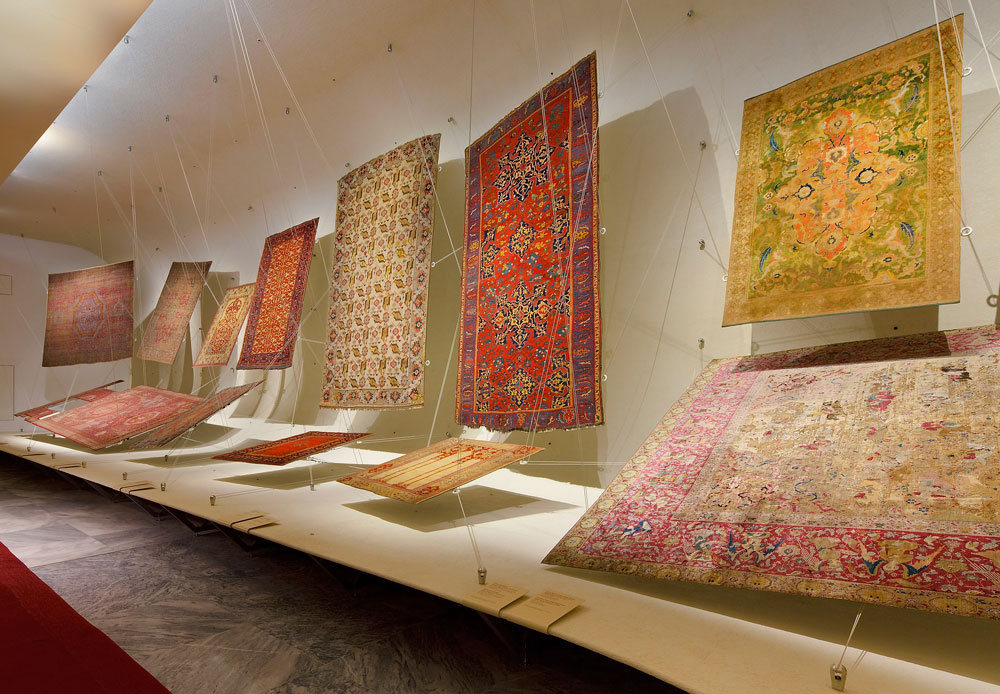
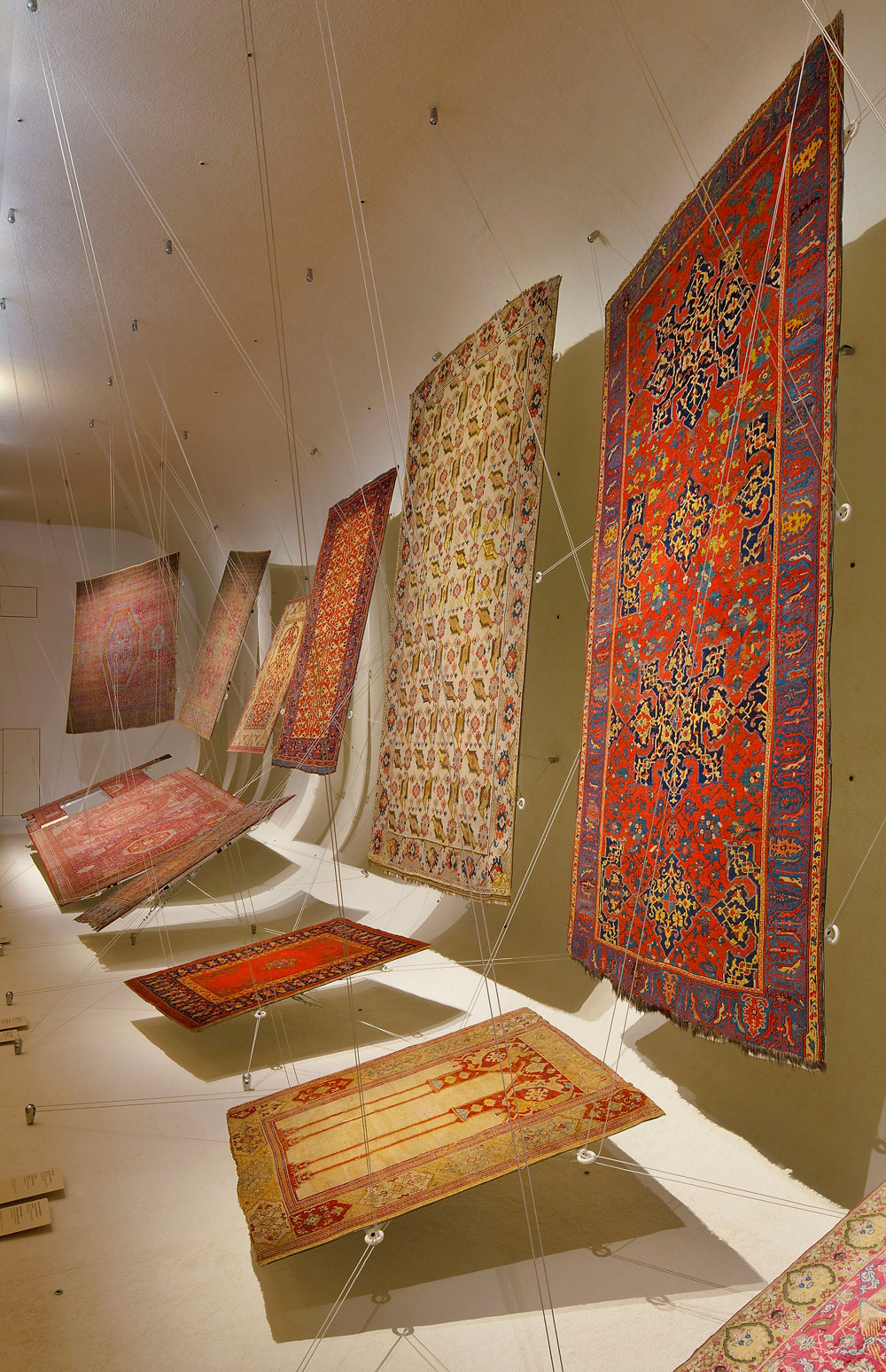

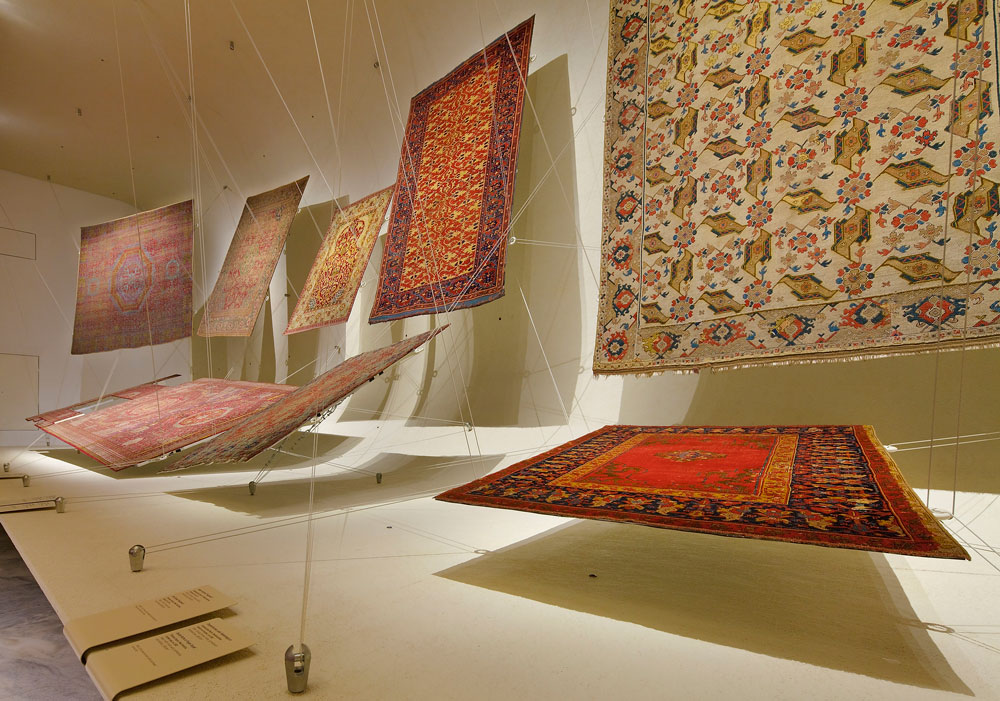

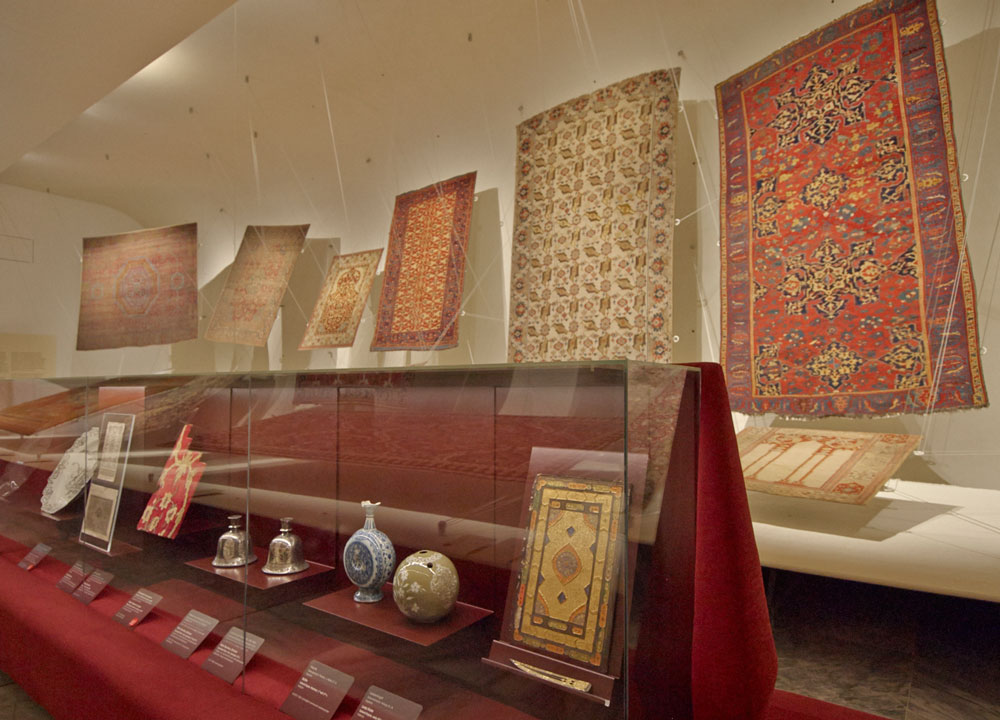
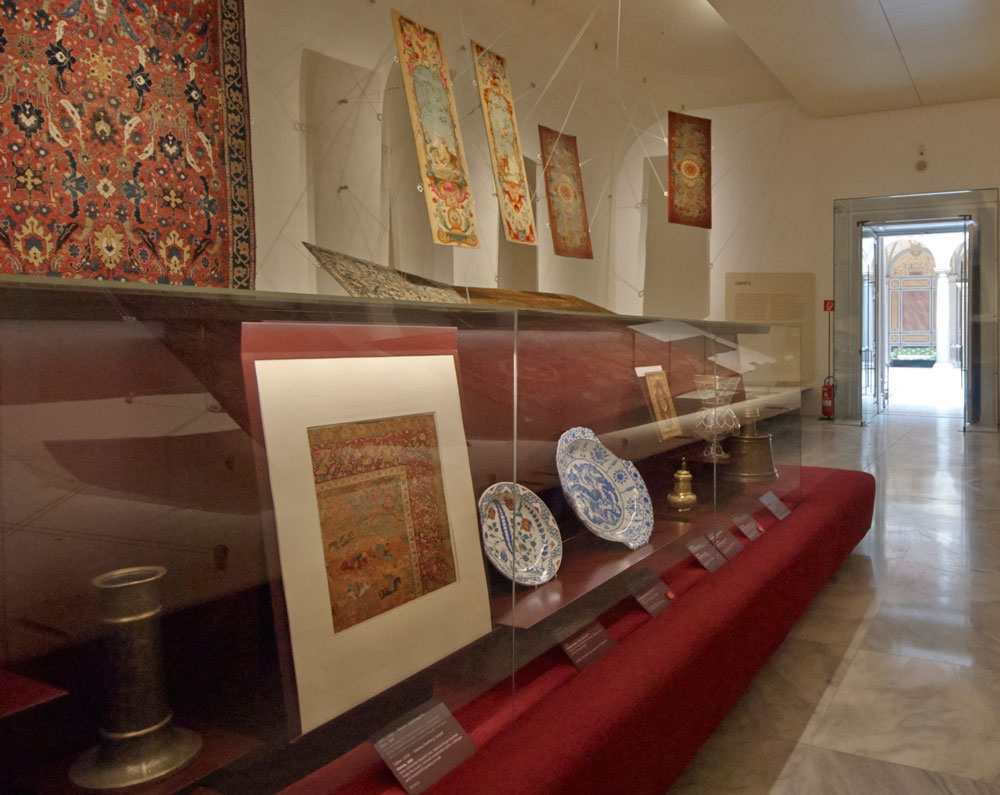
The visualisation of the closely interlinked geographic, stylistic, and cultural connections between Europe and both the Middle East and south-western Asia from the period between the 15th and 18th centuries is a central aspect of the display space’s curatorial reconception and redesign. In his architectural concept, Michael Embacher juxtaposes carpets of differing origins, highlighting their plasticity and fragility by using thin steel cables to weave them into his spectacular whole-room installation’s outer shell. Thus positioned at various heights, slightly tilted and turned, the individual objects seem to float within the space.
Publication
The MAK Permanent Collection Carpets is accompanied by the MAK/GUIDE Carpets, edited by Christoph Thun-Hohenstein and Barbara Karl, texts by Barbara Karl, Edith Oberhumer, Christoph Thun-Hohenstein, Bärbel Vischer, and Angela Völker, as well as an interview with Michael Embacher, German/English, ca. 192 pages and appr. 100 color illustrations, Vienna / Munich-London-New York: MAK / Prestel Verlag, 2014.


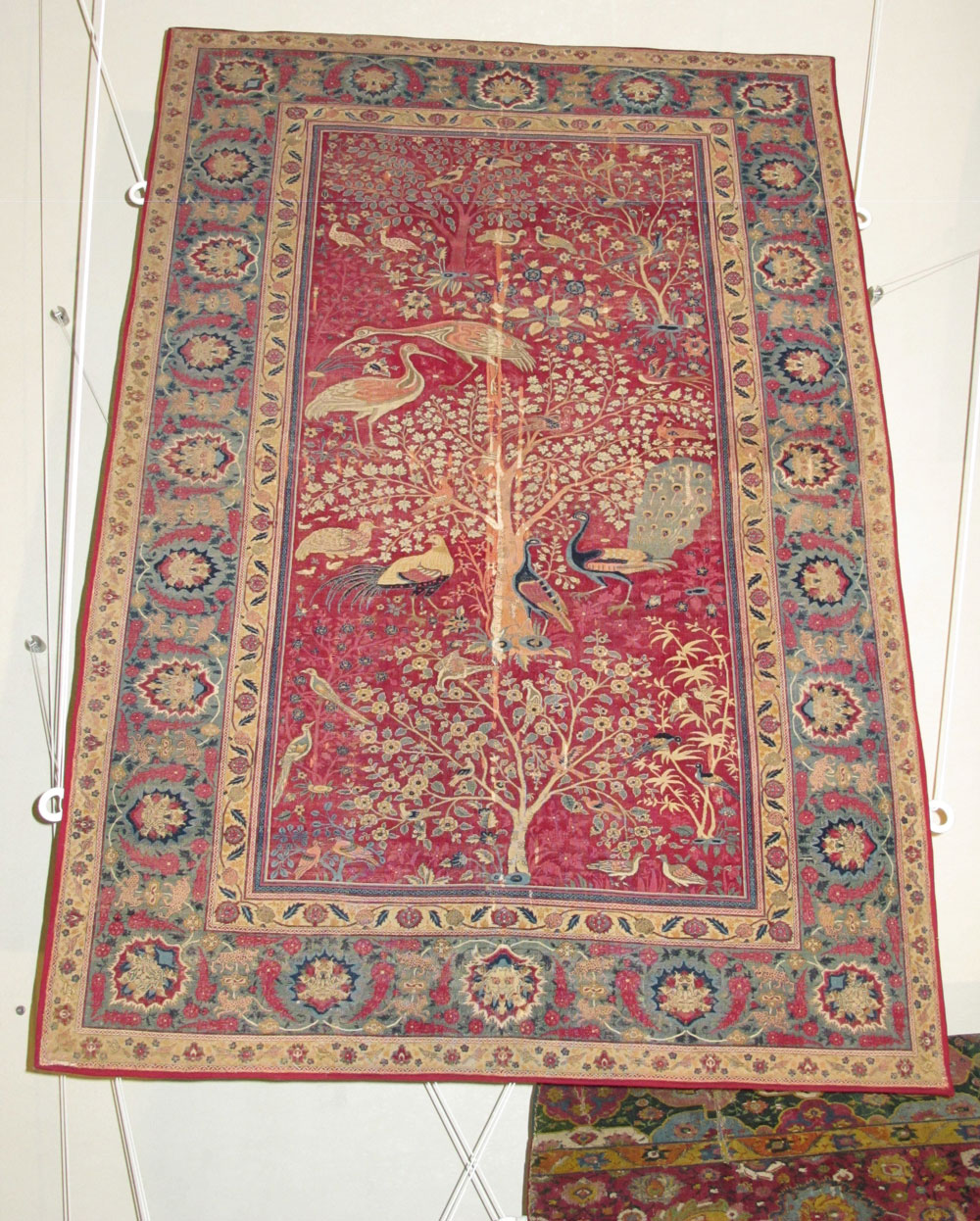
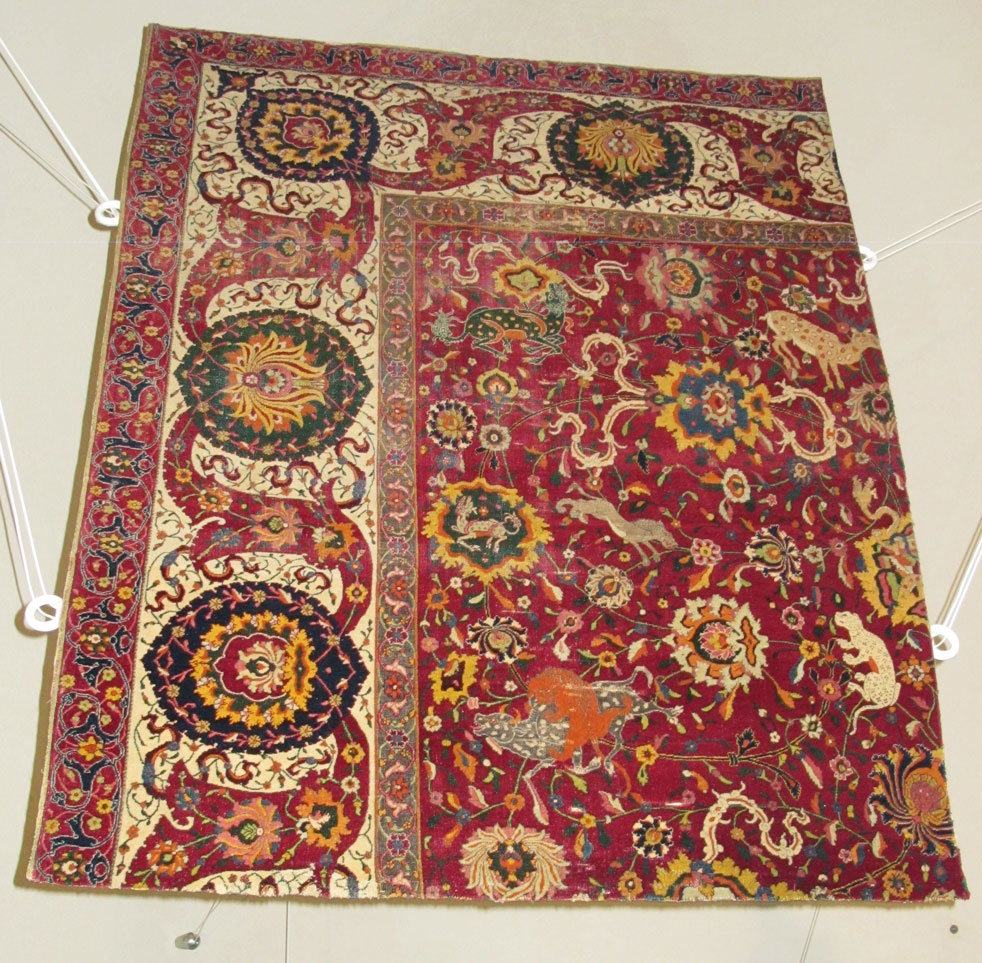




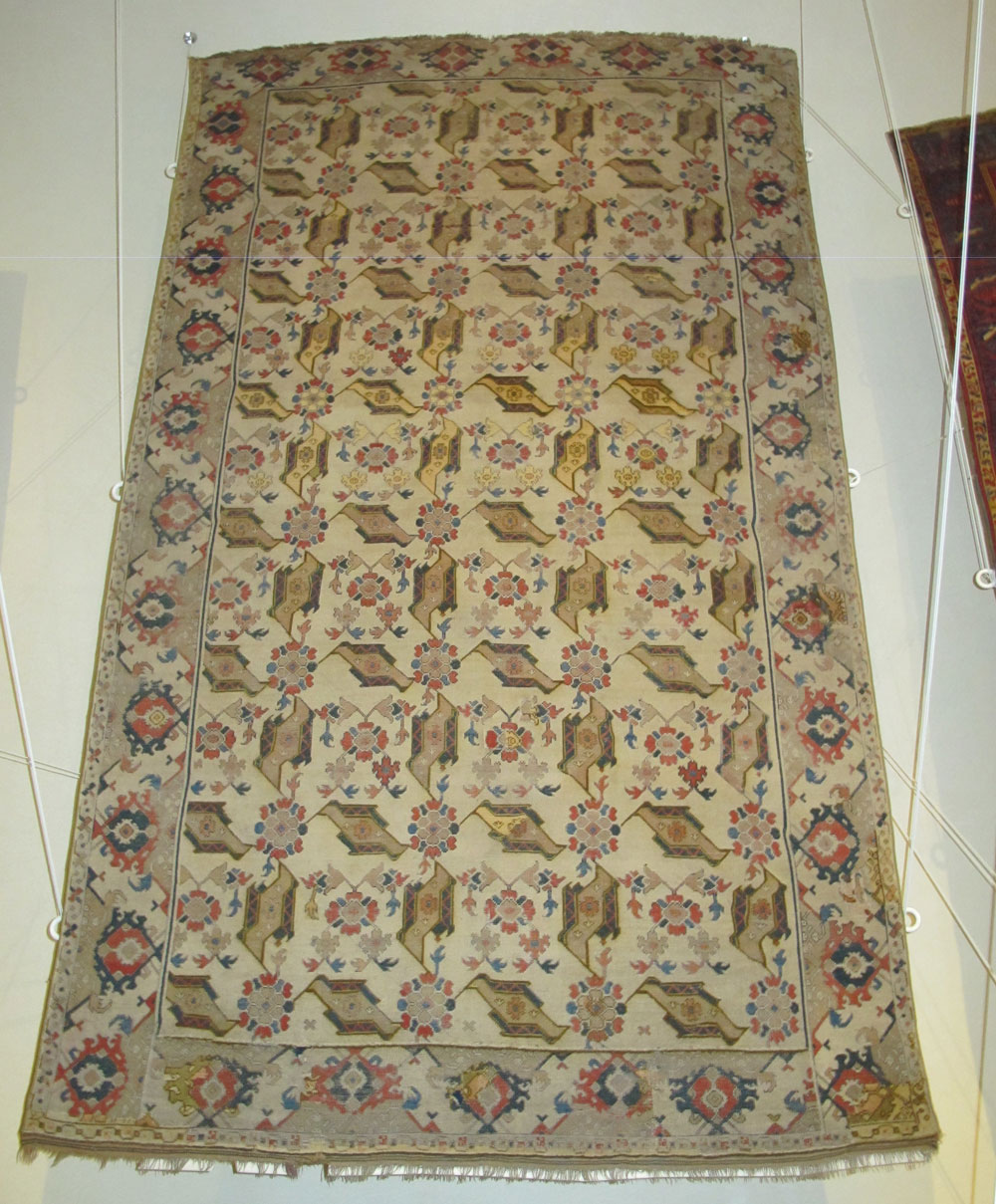

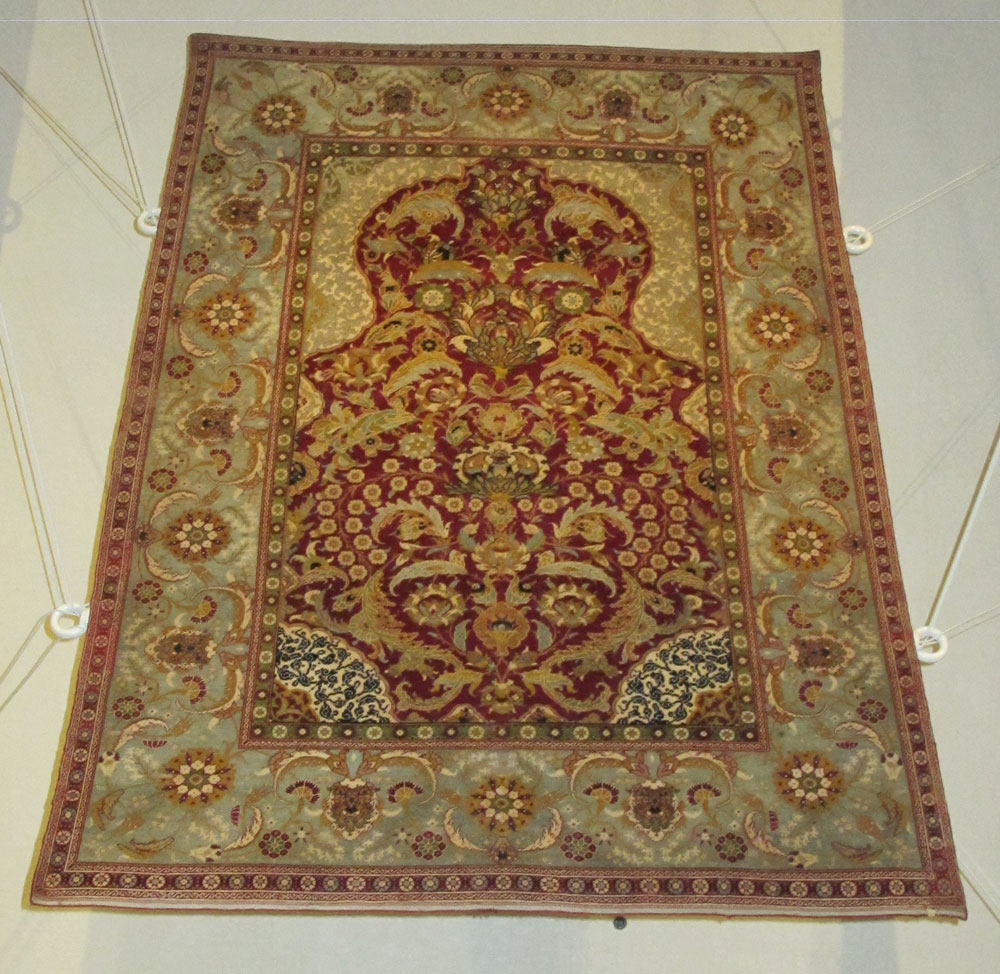




























Comments [0] Sign in to comment